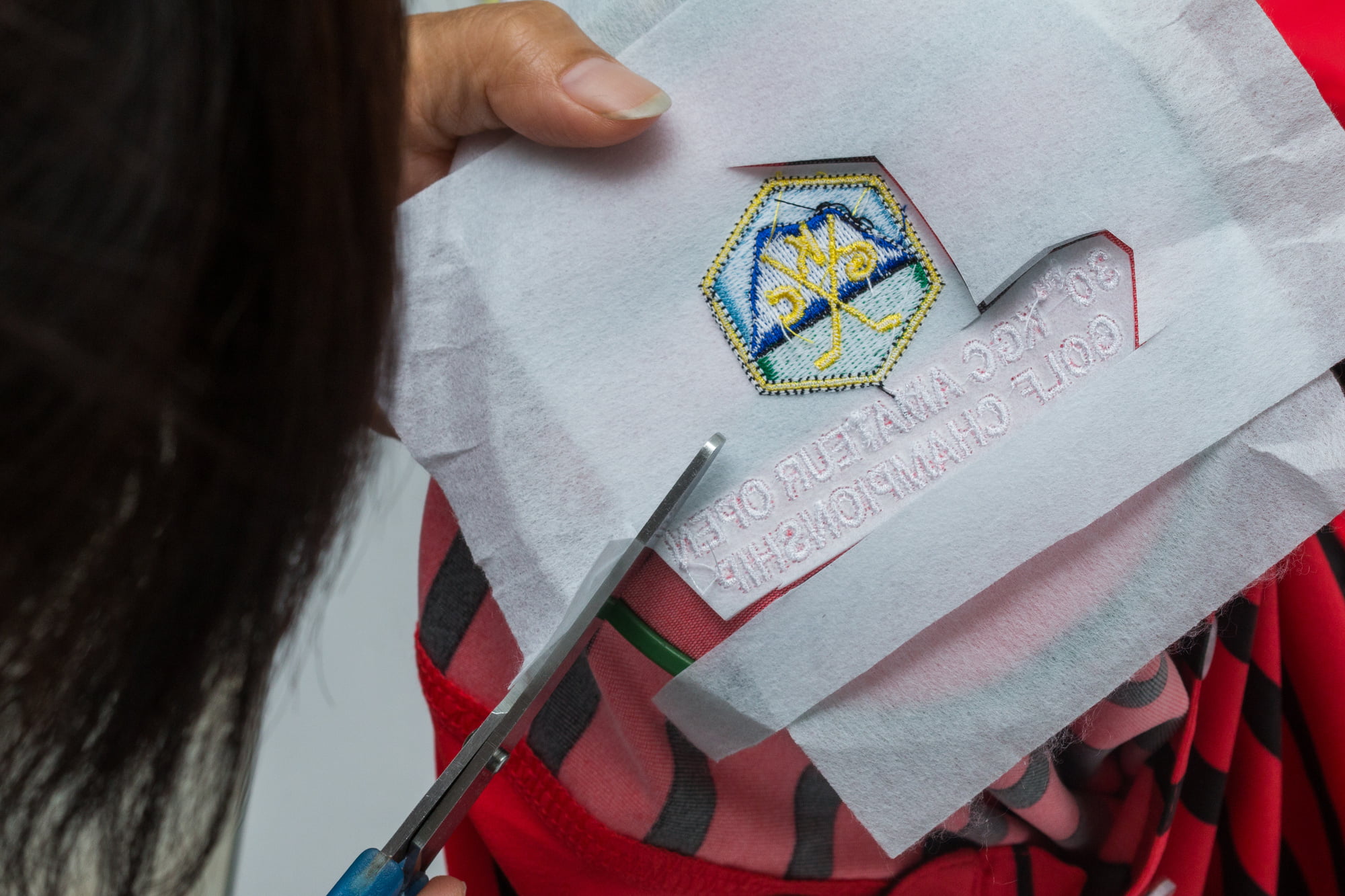The custom t-shirt market is growing at a fast rate, and we can see why. T-shirts, jackets, hats, polo shirts, and other types of clothing are great marketing materials.
For them to be a functioning marketing material, though, they must contain the logo. For that, the top choices of businesses would be to put their logo or anything else using screen printing or logo embroidery.
Each one is different than the other in terms of method, looks, and feel. What pushes a business to choose one or the other?
Let’s take a closer look at what embroidery and screen printing, and let’s find out which one is the best method for your business and campaign.
What is Logo Embroidery
Just as you would expect, logo embroidery involves the process of stitching the threads into the fabric itself. An individual can do this manually, but mass production now uses commercial embroidery machines to automate the process.
A designer would need to feed a digitized artwork of the logo into the machine. It has about 12 or more sewing heads, which enables the machine to work on 12 fabrics or more simultaneously. It can work with up to 15 thread colors.
This results in a more professional-looking logo on fabrics, but the thread count limits the embroidered design choices. It won’t be able to sew small texts well. Shading and gradients don’t translate well using threads, too.
What is Screen Printing
In screen printing, the manufacturer puts the design on the material using ink. With the use of a mesh screen, a stencil, and a brush, even an individual can apply the design. The process is mostly automated today, though, which reduces the production time.
Screen printing makes using a detailed logo possible. You can use designs with gradient and shading, as well as any effects and graphics you can create in a computer.
The process uses a different mesh screen for every color in the logo. Once the “printer” has applied the print, the material goes through a dryer to set the design.
Although the screen printing process doesn’t need people to apply the design, operators still have to manually load and unload the materials.
Embroidery vs Screen Printing
Both are good choices when you want your logo printed on your marketing materials. Let’s take a deeper look at their differences to help you decide better.
Type of Material
Although both embroidery and screen printing are both suitable for the usual clothing item, the former has its limitations.
Because it uses threads, you can only use it on a fabric. This still gives you a wide range of choices, though.
You can use it on shirts, tote bags, handkerchiefs, and even hats. If you’re thinking of giving away business polo shirts or any other clothing item, embroidery is still within your choices.
If you’re thinking of using coffee cups, however, you’d have to choose screen printing instead. T-shirts are a great material for this method, too, since the smoothness provides a nice surface for the ink.
Note also that embroidery might be too heavy for lightweight fabrics, such as in t-shirts. The stitches create tension in the surrounding fabric, which might distort the whole garment.
Durability
In embroidery, the threads hold on to the fabric quite well. It’s even more durable than print. You can expect it to last as long as the garment.
The manufacturers usually use top quality threads as well, which guarantees that fading will be minimal. With high-quality fabric, the garments would last you a long time as well.
Screen printed materials can last for a long time, but you have to take care of it meticulously if you want to use the fabric for years.
For instance, you can’t iron the screen printed fabric directly. You have to put another fabric in between the iron and the fabric so as not to damage the print.
You can also expect some fading to happen, especially when you wash it frequently. Washing it on a high temperature, about 105 degrees Fahrenheit and up, can cause both the print and the fabric to fade faster.
Your Preference
Embroidery and screen printing produce vastly different looks.
Do you like the look and feel of threads? Or do you prefer the look of a printed design?
The design of your logo matters as well. If it has small texts and too many colors, it might not translate well into a fabric using threads. On the other hand, ink might not capture the real essence of your brand.
In the end, it all comes down to your preference and the feel you want to exude.
Cost
The cost is a major consideration point when choosing which method you’d prefer for your marketing materials. In general, screen printing is cheaper than embroidery, but it’s not all that simple.
The final price takes into account different factors, such as the design and the size of the order.
Manufacturers usually base the price of screen printing on the numbers of colors in the design and the locations where you want to imprint the design.
In embroidery, the price usually factors in the number of stitches. If you have a complicated design or if you want the design to be larger, expect to pay a much higher rate.
There are set-up fees to consider as well. When you place a repeat order, you usually won’t have to pay another set-up fee for embroidery. In screen printing, though, you’ll have to pay a set-up fee again for the same price or at a reduced rate.
Lastly, the size of your order is a major factor as well. In both methods, the price becomes cheaper the larger your order.
Which is the Right One for Your Wichita Business?
Both methods, logo embroidery, and screen printing, offer their own advantages and disadvantages. Each method isn’t necessarily better than the other as it all boils down to what your business needs.
If you have any questions or you need help in choosing, contact us now. We’ll discuss which one is the right solution for your Wichita business.

